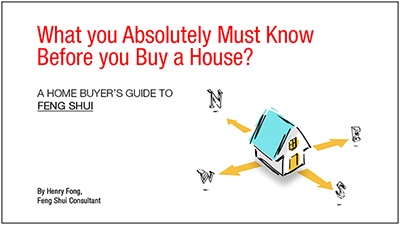by Master Hung Hin Cheong
Cremation
There is a growing tendency towards cremation, especially in territories where land is at a premium. How does fengshui affect cremations?

Actually cremations are not new to fengshui. One of the early Qing emperors, shun zhi (顺治) (1638~1662), was cremated and his ashes interred in an elaborate tomb built according to traditional fengshui requirements. The Qing Dynasty continued to survive for 249 years after him.
It was also usual for high ranking Buddhist monks to be cremated and their ashes buried. The burial sites also observed traditional fengshui requirements, except the focus was placed on perpetuating and propagating the monks’ reputation and teachings, rather than prospering their off-spring which they obviously did not have.
The short answer is that as long as the ashes are returned to the earth, the same mechanism of ‘signal’ generation still applies. Some of the memorial parks do make provisions for urn burial.
The Feng Shui Master’s Job
In modern society, people’s expectations and priorities have changed. Fewer people are interested in perpetuating their bloodline for multiple generations. People are more interested in financial well-being, and quickly. So yin house fengshui has also changed with the times.
The land form behind a tomb affects descendent luck, whereas the land form in front, especially water, affects money luck. In the past when descendent luck had priority, much attention was paid to the landform at the back of the tomb. Entities like ‘Incoming Dragon’ (入首龙) and ‘Dragon Vein’ (龙脉) were the primary considerations. These days, attention is often focused on the landform in front, where the money is. (The term ‘landform’ covers both hills and water.)
Having located an area of acceptable landform, the fengshui master will set about to personalize the orientation of the casket and the tombstone for the deceased, using the deceased’s birth data as reference. The alignment is done down to an accuracy of ±1.5° on the compass.
Technically there are 2 alignments: one for the casket, another for the tombstone. The casket is aligned to optimize reception of the qi inside the earth. This qi flows along a ‘Dragon Vein’, and the casket is aligned to receive the qi at a particular angle.
The tombstone acts as the qi mouth of a tomb, in much the same way as the door is the qi mouth of a yang house. So the tombstone is aligned to receive the optimum external qi, typically determined by the presence of water in the vicinity.
Today, the process is often simplified. This degree of fine tuning is rare. More often than not, both casket and tombstone are aligned in the same direction. In fact the massive earthworks at some of the modern memorial parks have all but obliterated the ‘Dragon Veins’.
Notwithstanding that, it is vital to ensure that the alignment of casket and tombstone is compatible with the deceased person’s favorable elements, as determined from his birth data. (The 5 metaphysical elements: wood, fire, earth, metal and water make up the cornerstones of all branches of Chinese metaphysics.)
There are 2 main streams of classical fengshui: san yuan (三元) and san he (三合). These days, san yuan is used almost universally for yang houses, while san he is still used for yin house. San he provides long lasting effects, whereas san yuan provides quicker but more transient results. There are of course masters who use san yuan for yin house as well.
A point to note: as there is usually only one chamber in a tomb, popular qi distribution techniques like 8-Mansions and Flying Stars are not applicable to yin house fengshui. Direction becomes the sole variable that the fengshui master can manipulate to optimize the receipt of qi. For this reason, alignments are carried out to a finer degree in yin houses. This is the major difference between yin house and yang house fengshui. The landform principles are the same.
Two other tasks that the fengshui master often does are to locate the Earth Deity (后土) within the burial plot if the deity is installed, and locate the drainage exit if the area in front of the tomb is enclosed. There are prescribed formulae for doing this.
A professional fengshui master should then provide a written report to the client detailing his recommendations, and provide clear instructions to the tomb construction crew in the form of a drawing. If the burial plot is purchased in advance for future use, the fengshui master’s scope of work ends here.
The next stage, often considered a new job, is to attend to a burial. The work includes selecting a suitable date and time for burial, checking beforehand that the burial site has been prepared according to the fengshui prescription, and then ensuring that the casket is lowered into the burial pit at the selected time, is placed centrally in the pit and aligned correctly.
In the old days, it is not uncommon for sealed caskets to be kept aside for many months until a favorable date arrives. This practice is seldom possible in modern times. The fengshui master is usually given only a few days in which to select a usable date and time. It usually means compromises. With modern technology, it is possible to refrigerate the body and delay the funeral service for a few weeks, but that decision has to be taken by the family.
From the fengshui perspective, the erection of the tombstone (立碑) is another important event. There is more time to select a good date for that. Erecting the tombstone may be compared with ‘topping off’ a yang house. There is another traditional ceremony called ‘Prospering the Tomb’ (旺山), which is akin to a house warming party.
Uneasiness
Many people feel uneasy about visiting burial places. Such feelings are understandable but really quite unnecessary. Perhaps some of the older cemeteries may be disorderly and poorly maintained and therefore appear unfriendly, but modern memorial parks are orderly and well maintained. Some of the newer ones are even designed in the style of a recreational park. There is no element of eeriness there.
What about ghosts? Classical fengshui does not concern itself with ghosts. Neither does it deny the existence of ghosts. Certainly not many people have actually seen ghosts at a burial ground, let alone been harmed by them.
A modern memorial park is not unlike a housing estate. Walking along a pathway inspecting the graves is like walking along a road in the housing estate looking at the houses. Do we expect the owner to come out to chase us away for admiring his house? If not, why then should we be afraid the ghost will come out to haunt us?
Of course if we want to transgress over a grave, it would be common courtesy to ask first politely. Surely we would do the same if we wish to go up to a house to ask for information or whatever, wouldn’t we?
Buying land in advance
Just as writing a will is no longer a taboo, purchasing a burial plot in advance for future use has become popular in recent times. Actually it is not something new. It was standard practice for the emperors and wealthy people in the old days.
Just as having a will properly drawn up will facilitate the distribution of our estate, having a pre-purchased burial plot constitutes prudent action to make our eventual demise less of a burden to our surviving family members.
Another way to look at it is that most people want to provide the best to their children and grandchildren out of love. Why should this love not continue after death?
Some people even buy burial plots for investment, hoping to make a profit out of it. But that’s another story…
from the ramblings of one hhc, a fengshui crazee
22-July-2007
Appendix-1: Historical tombs
The following historically significant tombs will be discussed at the lecture. They have become popular tourist attractions, but Mastery Academy’s students visited them for a different purpose: to evaluate the tomb fengshui and how it affected descendent luck.
- The 1st Chinese ruler who proclaimed himself Emperor was Shi Huangdi (秦始皇) (260~210 BCE). He literally created a mountain for his tomb. If ever fengshui was used, it must have been very rudimentary at the time. The tomb was badly sited. The Dragon was clearly passing behind. The Qin Dynasty lasted barely 4 years after his death.
- The founding emperor of the Ming Dynasty, zhu yuan zhang (朱元璋) (1328~1398), was buried in Nanjing at the Meridian Spot of a powerful Dragon. The Dragon had 16 humps behind the tomb. That indicated the Ming Dynasty would last for 16 generations (total 276 years), which it did. This was in spite of the fact that 14 out of the 16 emperors were very mediocre, and a few were downright incompetent!
- On the other hand, the father of modern China, Dr. Sun Yat-sen (孙逸仙) (1866~1925) was buried at the same Dragon but missed the Meridian Spot. He had no notable descendents, and the regime he founded, Nationalist China, was overrun by Communist China barely 24 years after Sun’s demise.
- Nurhachi (努尔哈赤) (1559~1626) was the leader of the tiny nu zhen tribe (女真族), who united the diverse Manchu tribes of Northeastern China and built a powerful political and military machinery that later conquered the whole country and established the Qing Dynasty. He was buried at a Meridian Spot near Shenyang. That Dragon had 13 humps behind the tomb, which indicated the Qing Dynasty would last for 13 generations, which it did. Now it should be noted that the Manchus were an ethnic minority in China. The fact that they managed to overcome the Han ethnic majority and ruled China for 295 years was an unusual historical event. They couldn’t have done it without extraordinary fengshui help.
- The first Qing emperor who entered the central plains of China and set up capital in Beijing was shun zhi (顺治) (1638~1662). He died of smallpox and was cremated, but the ashes were buried in a conventional tomb located at the Qing Eastern Imperial Tombs area near Beijing. The Qing Dynasty continued for another 249 years after shun zhi.
- One of the most successful emperors of the Qing Dynasty, and arguably of all time, was qian long (乾隆) (1711~1799). He was buried at a Meridian Spot, but chose to face a ‘Death & Emptiness Line’. Whilst the Qing Dynasty continued for another 112 years, the dynasty started its decline after qian long, and his descendents were very mediocre, downright incompetent, or died young.
- The founding Chairman of the Peoples Republic of China, mao ze dong (毛泽东) (1893~1976), clearly benefited from his grandfather’s burial in the hills near Changsha. The tomb was set in an area of superlative fengshui, with landforms of emperor producing quality. However multiple humps of the Dragon behind the tomb were absent. Hence Chairman Mao ruled like an emperor, but his reign lasted only one generation.
(Article kind courtesy of Master HC Hung)
